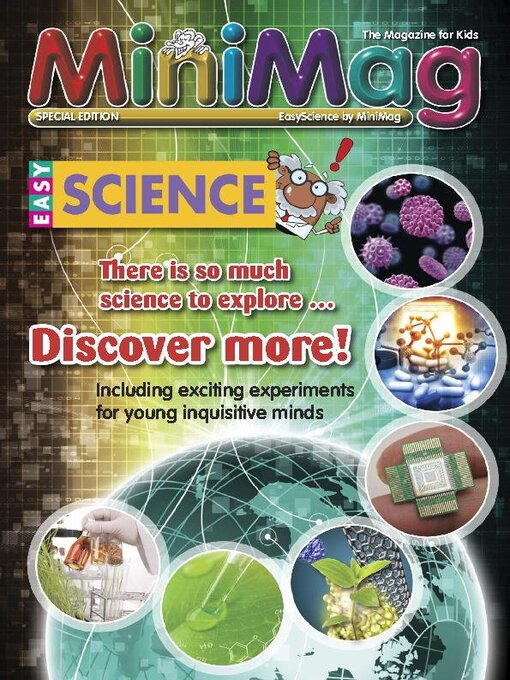In this special edition of MiniMag, we take a closer look at the latest advancements in bio-innovation, nano technology, and hydrogen fuel. From understanding the building blocks of life, to harnessing the power of tiny particles, we explore the ways in which science is shaping our future. Discover the latest research in bio-innovation, including new ways to fight diseases and create sustainable food sources. Learn about the potential of nano technology in fields like electronics and medicine. And discover how hydrogen fuel is emerging as a clean and renewable energy source. As a children's education magazine, MiniMag, one of the longest running childrens education magazines, provides age-appropriate and engaging content that makes learning about science fun and easy.
BIO INNOVATION
NANO TECHNOLOGY
HYDROGEN FUEL
The world’s smallest machines
The many faces of plastic
Nature’s building materials • There is astonishing variety in nature. From tiny bacteria to the largest whale and everything in between, every unique species holds secrets for humanity to unlock. Despite the large variety of creatures, many of the structures they build use similar materials that are perfectly engineered for what they need to do. Humans often copy nature’s technology for their own inventions.
Secrets of the Swamps • If you knew there were diamonds hidden in your garden, you would be digging for them every day! Nature holds many precious materials like diamonds, gold and platinum deep in its earthy pockets, but in other places, its riches are on display right under your nose.
Carnivorous enzymes: De-jellify your jelly! • Certain fruits contain enzymes called proteases that chop proteins into smaller pieces. Try this experiment to see what happens when bromelain, an enzyme in pineapple, gets hold of a protein called collagen.
Making the perfect plastic • More than ever, the world needs problem-free plastics. To help, you could become a chemical scientist or chemical engineer. While chemical scientists are involved in researching plastics and discovering their properties, chemical engineers take that research into the real world and figure out how to make them on a large scale in chemical plants.
Play with nature’s building materials
Code your own secret message using DNA! • It’s lots of fun to send secret messages. Use the code below to write your own secret message to someone, or decode the messages provided.
The world between your toes • It’s fun and gooey when wet – then it’s called mud. If you step some of it into the house, your mom calls it dirt. When it makes you sneeze while cleaning your room, you call it dust. When it’s sticky and dense it’s called clay, and when it runs through your fingers at the beach it’s called sand. But usually, this vital material that nourishes life is simply called soil. This ancient substance may seem dead but it’s teeming with life you never dreamed existed and need more than you know. Biotechnology could be used to add the right organisms like mycorrhizae to soil and make life as comfortable as possible for them. This can decrease the amount of chemicals like fertilisers and pesticides that are needed, make plants produce more crops and fix infertile soils. It can also help to stop desertification and even prevent plants from getting sick.
What if Old McDonald had a nanofarm? • There is a famous song about a farmer named Old McDonald that had all kinds of animals on his farm. Farmers of his generation had the luxury of giving their animals time to grow at their own pace. The rhythm of farm life was less hurried and more relaxed. Modern day farmers face the massive task of feeding 7 billion people and will need to double food production in the next 30 years.
Nanotechnology – going down the rabbit’s hole
PERIODIC...

